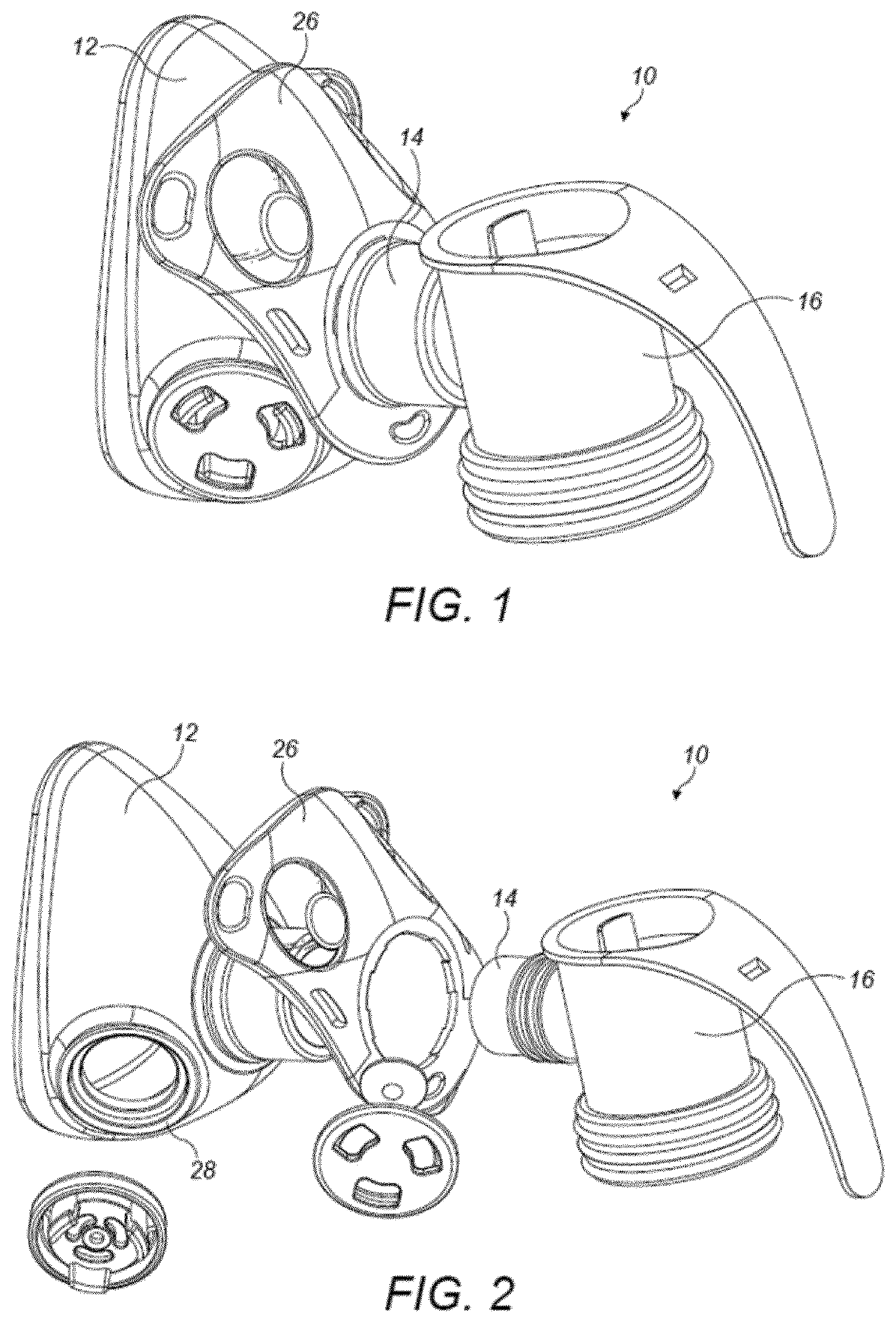Pharmaceutical administration to neonates, infants and children
- Summary
- Abstract
- Description
- Claims
- Application Information
AI Technical Summary
Benefits of technology
Problems solved by technology
Method used
Image
Examples
example 1
n Volumes in Children Younger than 12 Years
[0152]A total of 12 subjects aged 3-5 years and 11 subjects aged 6-11 years was evaluated with regard to the highest inhalation volume they considered comfortable; i.e. which they could inhale slowly and deeply, yet without straining. The results (as summarised below) indicate that the majority of subjects aged 3-5 years can comfortably inhale a volume of up to 0.50 L; the majority of subjects aged 6-11 years can comfortably inhale a volume of up to 0.70 L.
TABLE 2Inhalation volume (L)3 to 5 years group6 to 11 years group0.30100.40500.50400.60120.70180.8001
example 2
Deposition Results Conventional Vs. Inventive Inhalation Device in ICRP-66 Human Respiratory Tract Model
[0153]This in vitro deposition experiment is aimed at comparing the performance of a conventional nebuliser (here a PARI device comprising a VIOS® compressor and a PARI LC Plus nebuliser) with the inhalation device according to the second aspect of the invention (here labelled inventive device) operating at a controlled flow of 6 L / min and an inhalation volume of 0.4 L in the ICRP-66 Human Respiratory Tract Model, using a budesonide suspension product by Astra Zeneca, Pulmicort® respules or similar formulations in high, mid- and low dose strengths of 1 mg / 2 mL, 0.5 mg / 2 mL and 0.25 mg / 2 mL, respectively, as the ‘model drug’ formulation. Data were calculated for a 4-year-old subject, which is representative for a patient group from 1 to 8 years.
[0154]The inventive device used for these test sequences comprised a handset based on PARI LC SPRINT, a jet nebuliser (operating pressure 1...
PUM
 Login to View More
Login to View More Abstract
Description
Claims
Application Information
 Login to View More
Login to View More - R&D
- Intellectual Property
- Life Sciences
- Materials
- Tech Scout
- Unparalleled Data Quality
- Higher Quality Content
- 60% Fewer Hallucinations
Browse by: Latest US Patents, China's latest patents, Technical Efficacy Thesaurus, Application Domain, Technology Topic, Popular Technical Reports.
© 2025 PatSnap. All rights reserved.Legal|Privacy policy|Modern Slavery Act Transparency Statement|Sitemap|About US| Contact US: help@patsnap.com


